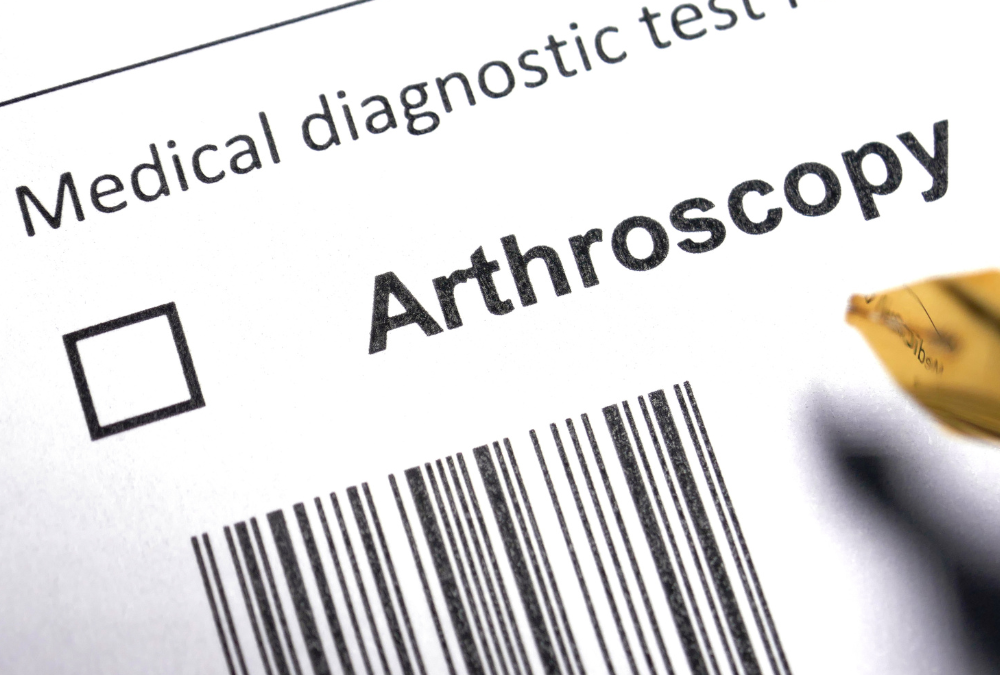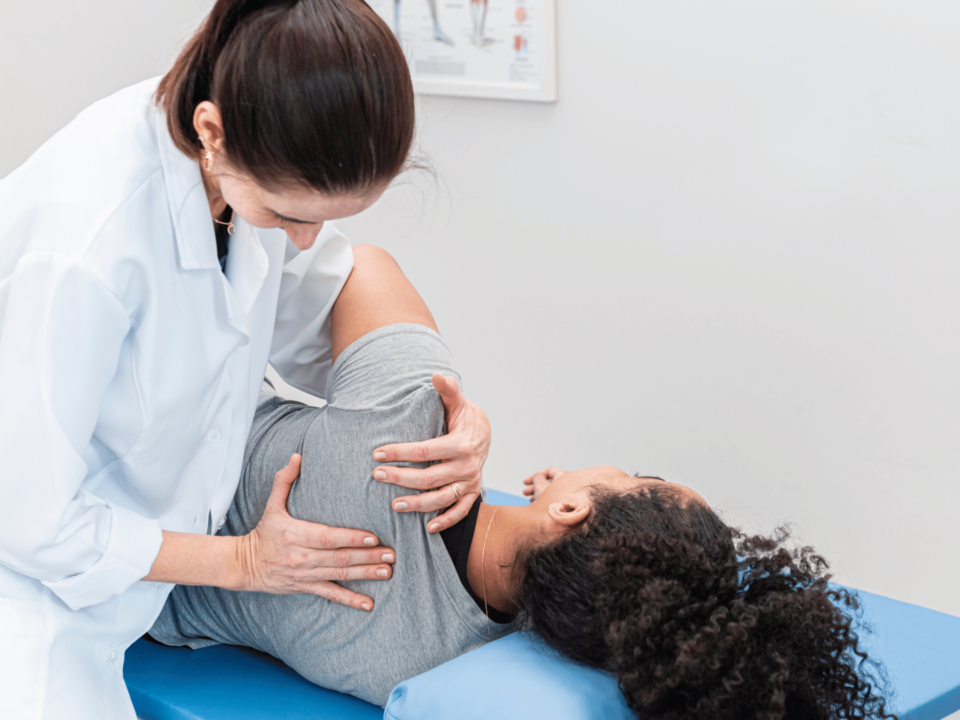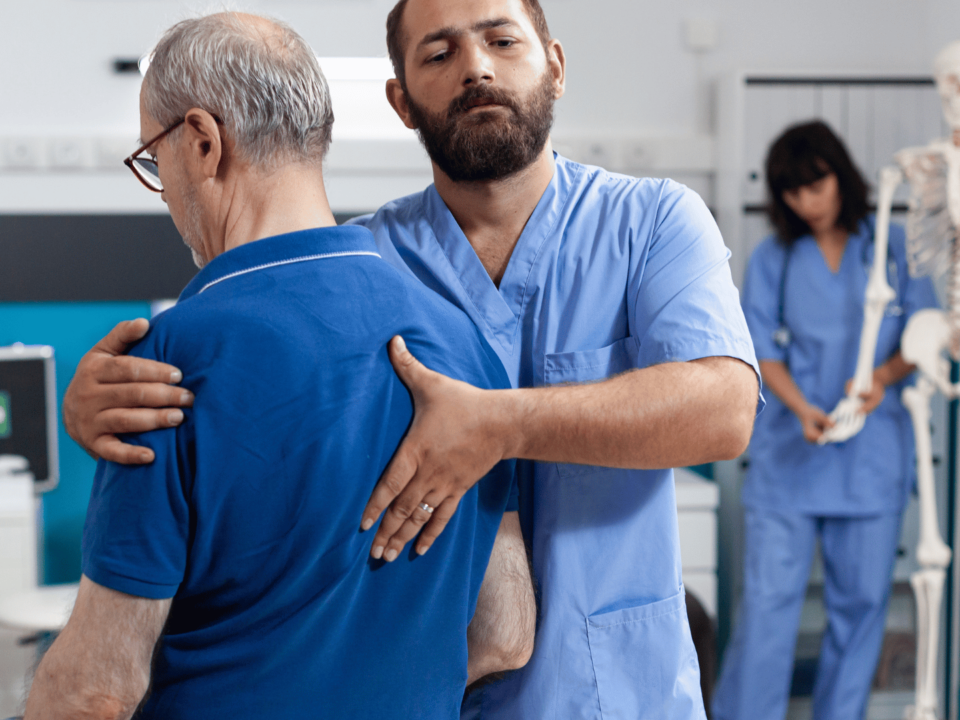
Unlocking Mobility: The Role of Orthopedic Specialists in Laminectomy Procedures
December 14, 2023
Fluid Dynamics: Understanding Joint Aspiration through the Expertise of Orthopedic Specialists
December 14, 2023Inside the Joint: Navigating the Intricacies of Arthroscopy with Orthopedic Specialists
Arthroscopy is a minimally invasive surgical procedure that orthopedic specialists use to visualize, diagnose, and treat problems inside a joint. The word arthroscopy comes from two Greek words, “arthro” (joint) and “skopein” (to look), and, together, they mean “to look within the joint”.
Orthopedic specialists, also known as orthopedists or orthopedic surgeons, are physicians who specialize in the musculoskeletal system, which includes bones, joints, ligaments, tendons, muscles, and nerves. They use arthroscopy as a tool to help diagnose and treat a variety of conditions and injuries.
Understanding Arthroscopy
Arthroscopy is a procedure that allows orthopedic specialists to examine joints without making a large incision. A small, pencil-sized instrument called an arthroscope is inserted into the joint through a small incision. The arthroscope contains a light and a small video camera that sends images to a monitor, allowing the surgeon to see the structures inside the joint in great detail.
This procedure is commonly used to diagnose and treat conditions in the knee, shoulder, elbow, wrist, ankle, foot, and hip. It can help determine the extent of an injury and the appropriate treatment, and it can also be used to perform surgery.
History of Arthroscopy
The first arthroscopic examination of a knee was performed by a Japanese orthopedic surgeon named Dr. Kenji Takagi in 1919. However, it wasn’t until the 1960s that arthroscopy began to be widely used in orthopedic surgery, thanks to the development of more advanced instruments and techniques.
Today, arthroscopy is a common procedure, with millions of arthroscopic surgeries performed worldwide each year. It has revolutionized orthopedic surgery, allowing for less invasive procedures, shorter recovery times, and improved outcomes for patients.
Benefits of Arthroscopy
Arthroscopy has many benefits over traditional open surgery. Because it involves smaller incisions, there is less damage to the surrounding tissue, which can lead to less pain and swelling after surgery. This can result in a faster recovery and return to normal activities.
Arthroscopy also allows for a more accurate diagnosis. The high-definition video camera provides a clear view of the entire joint, making it easier to identify and treat problems. In many cases, the surgeon can diagnose and treat the problem in a single procedure.
Role of Orthopedic Specialists
Orthopedic specialists play a crucial role in the diagnosis and treatment of musculoskeletal conditions and injuries. They have extensive training in the proper diagnosis and non-surgical and surgical treatment of injuries and diseases of the musculoskeletal system.
Orthopedic specialists can specialize in certain areas, such as sports medicine, pediatrics, spine, hand and upper extremity, foot and ankle, joint replacement, or trauma. Regardless of their specialty, all orthopedic surgeons are trained in arthroscopy.
Education and Training
Becoming an orthopedic specialist requires many years of education and training. After earning a bachelor’s degree, prospective orthopedic surgeons must complete four years of medical school, followed by a five-year residency in orthopedic surgery. Some orthopedic surgeons choose to further specialize by completing a fellowship in a specific area of orthopedics, such as sports medicine or joint replacement.
Throughout their careers, orthopedic surgeons must continue their education to stay up-to-date with the latest advancements in orthopedic surgery, including new arthroscopic techniques and technologies.
Common Conditions Treated
Orthopedic specialists treat a wide range of conditions that affect the musculoskeletal system. Some of the most common conditions they treat include arthritis, fractures, dislocations, sprains, strains, and tendonitis. They also treat conditions that are specific to certain joints, such as rotator cuff tears in the shoulder, meniscus tears in the knee, and carpal tunnel syndrome in the wrist.
Orthopedic specialists also play a key role in treating sports injuries. They often work with athletes to help them recover from injuries and prevent future injuries. They can also provide advice on proper training and conditioning techniques to improve performance and reduce the risk of injury.
Arthroscopy Procedure
The arthroscopy procedure begins with the administration of anesthesia. This could be local, regional, or general anesthesia, depending on the joint being examined and the patient’s overall health. Once the patient is anesthetized, the surgeon makes a small incision and inserts the arthroscope.
Fluid is then pumped into the joint to expand it and provide a clear view. The surgeon can then examine the joint and perform any necessary treatments, such as removing loose bodies, repairing torn ligaments or cartilage, or removing inflamed tissue. Once the procedure is complete, the incisions are closed with stitches or adhesive strips.
Preparation for Arthroscopy
Before undergoing arthroscopy, patients will have a pre-operative evaluation to assess their overall health and determine if they are fit for surgery. This usually includes a physical examination, medical history review, and possibly blood tests or other diagnostic tests. Patients may also need to stop taking certain medications before surgery.
Patients are usually asked to fast for a certain period before the procedure. They should also arrange for someone to drive them home after the procedure, as they may be groggy from the anesthesia.
Recovery from Arthroscopy
Recovery from arthroscopy can vary depending on the joint involved and the specific procedure performed. However, because arthroscopy is minimally invasive, the recovery is typically faster than with open surgery. Most patients can return home on the same day as the procedure.
After the procedure, patients may experience some pain and swelling in the joint. This can usually be managed with pain medication and ice. Physical therapy may also be recommended to help restore function and strength to the joint. Most patients can return to their normal activities within a few weeks, although full recovery can take several months.
Complications and Risks of Arthroscopy
Like any surgical procedure, arthroscopy carries some risks. However, complications are rare and most can be effectively managed if they do occur. Some potential complications include infection, blood clots, damage to the joint or surrounding structures, and complications from anesthesia.
There may also be some risks associated with the specific procedure being performed. For example, in knee arthroscopy, there is a small risk of damage to the cartilage or ligaments. In shoulder arthroscopy, there is a small risk of damage to the nerves or blood vessels.
Minimizing Risks
There are several steps that can be taken to minimize the risks of arthroscopy. These include choosing a skilled and experienced orthopedic surgeon, following all pre-operative and post-operative instructions, and maintaining a healthy lifestyle.
Patients should also discuss any concerns they have with their surgeon. Understanding the risks and benefits of arthroscopy can help patients make informed decisions about their treatment.
When to Seek Medical Attention
After arthroscopy, patients should seek immediate medical attention if they experience severe pain, fever, chills, redness or warmth at the incision site, or changes in sensation or function in the joint. These could be signs of a complication that needs to be addressed promptly.
Patients should also contact their surgeon if they have any concerns during their recovery. Regular follow-up appointments are important to ensure that the joint is healing properly and to monitor for any potential complications.
Conclusion
Arthroscopy is a valuable tool that orthopedic specialists use to diagnose and treat a wide range of joint conditions. It offers many benefits over traditional open surgery, including less pain and swelling, faster recovery, and improved outcomes.
Orthopedic specialists play a crucial role in the successful use of arthroscopy. Their extensive training and experience allow them to accurately diagnose conditions, perform complex procedures, and manage any potential complications. By understanding the role of orthopedic specialists and the arthroscopy procedure, patients can make informed decisions about their treatment and have realistic expectations about their recovery.




